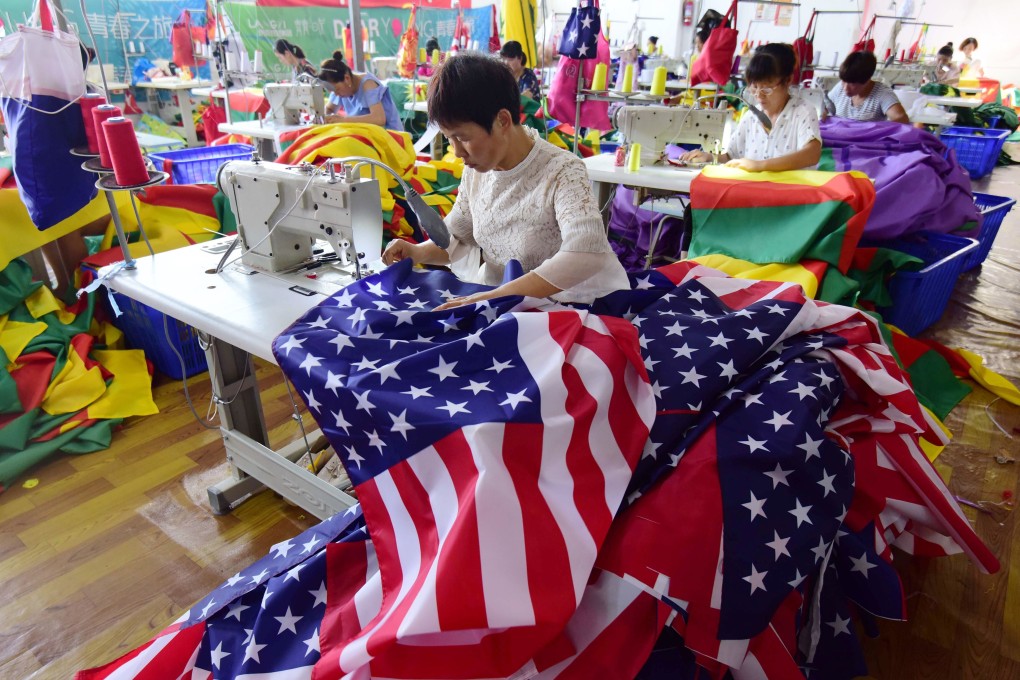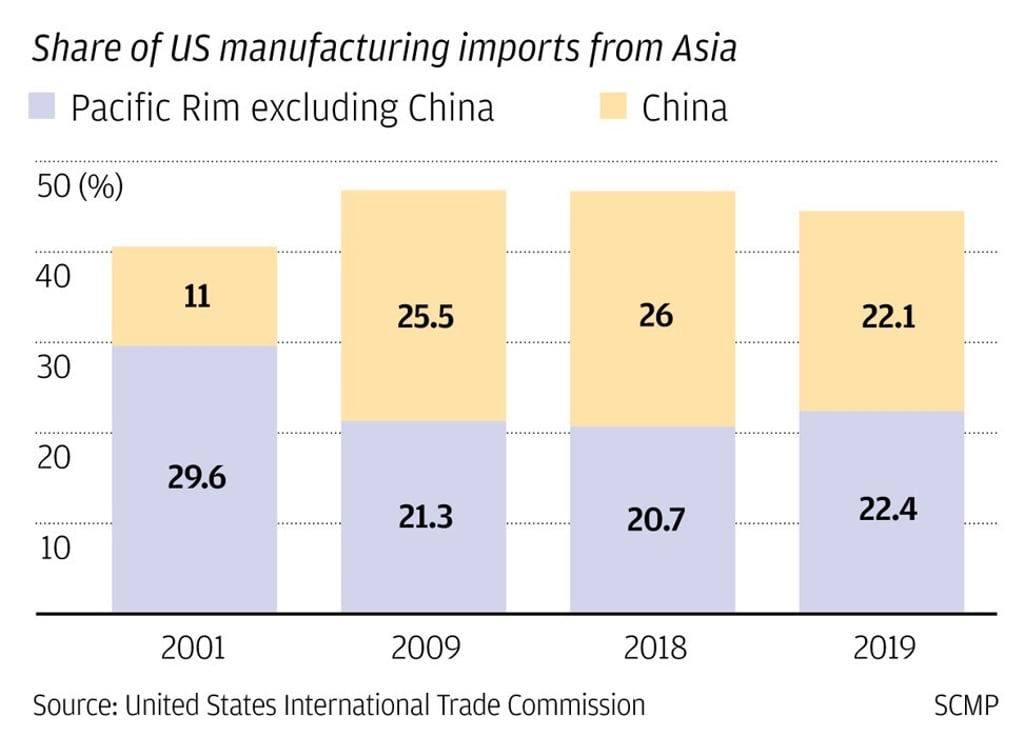Why US-China supply chain decoupling will be more of a whimper than a bang
- While China managed to keep export volumes stable by diversifying to other trading partners, the US’ overall trade balance has deteriorated
- Some degree of economic decoupling is under way, but it’s unlikely that a large number of American firms will cut China out of their supply chains

In a recent interview, Trump railed against “stupid supply chains that are all over the world”, further threatening to “cut off the whole relationship” with China and rejecting the notion that undoing the extensive links between the two largest economies comes with any trade-offs.
Over the past two decades, US manufacturing imports from the Pacific Rim region – East Asia, Association of Southeast Asian Nations, Australia, New Zealand and Papua New Guinea – consistently hovered at around 40 to 45 per cent of the total. However, the composition of trade partners within the region has shifted dramatically along with the rise of China.
In 2001, having just joined the World Trade Organisation and having recently emerged from the Asian financial crisis relatively unscathed, China’s processing trade took off. At this inflection point, China accounted for only a quarter of US manufacturing imports from Asia, with three-quarters coming from the rest of Asia, and Japan as the major source.


